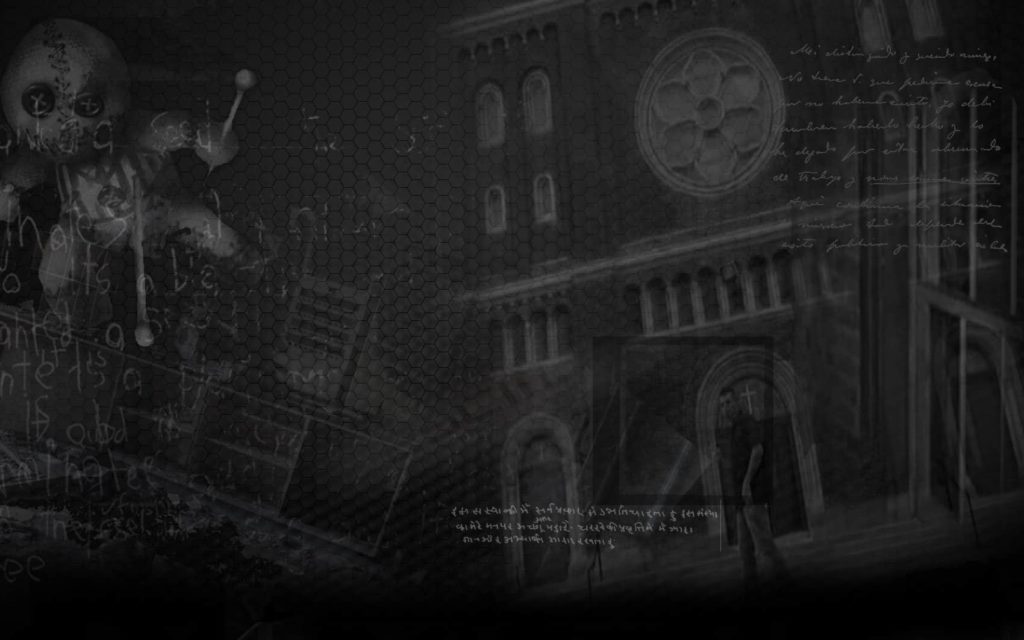
One of the most common ways that types of demons are classified in the study of demonology are by domain. When types of demons are classified by their domain, the demons are attributed to a specific activity such as moral sin, knowledge, questionable behavior that some people may be prone to, or certain misfortunes, maladies, or addictions. Each demon within its domain has its own tasks and abilities according to their authority and each demon interacts with mankind in their own unique way. Below are various ways that different Types of Demons have been classified by domain throughout the ages.
What is a demon?
Before we get started it is important to note what a demon is. According to Websters’s dictionary a demon is:
an evil spirit or devil, especially one thought to possess a person or act as a tormentor in hell.
Types of Demons
It is important to note that all of these different classifications for the types of demons below are based upon the western view that the demon is a fallen angel, cast out of heaven by God. The Devil or Satan will always be on the top of these hierarchies. Also do not try at any time to communicate or summon a demon at anytime!
Demons in The Testament of Solomon
One of the earliest works in Western Culture where types of demons are classified bydomain, the Testament of Solomon was purportedly written by King Solomon. In this piece King Solomon describes his interactions with Beelzebub and other demons who he enslaves to help build his temple. The book also contains numerous rituals and sigils that are still used to today to conjure demons.

Demons listed by Psellus’
In the 11th century Michael Psellus attempted classify types of demons by domain. The types of demons that Psellus divided demons into were Empyreal (Fiery), Aerial, Subterranean, Lucifugous (Heliophobic), Aqueous, and Terrene (Terrestrial).
Demons Listed by the Seven Deadly Sins
1. Deadly Sin 1 – PrideThe Lanterne of Light (an anonymous English Lollard tract often attributed to Wycliffe) was an anonymous work that is now believed to be written by Wycliff. The book categorized types of demons based up on the Seven Deadly Sins. These types of demons that Wycliff used would be later found in the books by John Taylor, the Water Poet.
St. Catherine of Siena Attacked by Demons1. Deadly Sin 1
- 1. Deadly Sin 1
St. Catherine of Siena Attacked by Demons - Demon – Lucifer
- 2. Deadly Sin 2 – Envy
- Demon – Beelzebub
- 3. Deadly Sin 3 – Wrath
- Demon – Satan
- 4. Deadly Sin 4 – Sloth
- Demon – Abaddon
- 5. Deadly Sin 5 – Greed
- Demon – Mammon
- 6. Deadly Sin 6 – Gluttony
- Demon – Belphegor
- 7. Deadly Sin 7 – Lust
- Demon – Asmodeus
Spina’s list of Demons
Inspired by different Legends and stories of his time, Alphonso de Spina, in 1467 classified demons by:
- Demons of fate – Otherwise known as the angel of death
An early depiction of a demon causing a nightmare, by Henry Fuseli - Incubi and succubi – Demons that have sex with the living
- Wandering groups or armies of demons – otherwise known as Legion
- Familiars – Familiars are animal spirit guides for witches and warlocks who are considered “personal demons.”
- Drudes – In German folklore it is an evil spirit that causes nightmares
- Cambions and other demons that are born from the union of a demon with a human being.
- mischievous demons
- demons that attack clergy
- Demons that entice people into the occult, or witchcraft
Binsfeld’s Types of Demons
In the Princes of Hell by Peter Binsfeld in 1589 different types of demons again are classified by the seven deadly sins, the only exception is that the names of the demon are slightly different than Lanterne of Light.
- Lucifer: pride
- Mammon: greed
- Asmodeus: lust
- Leviathan: envy
- Beelzebub: gluttony
- Satan: wrath
- Belphegor: sloth
The King James Bible’s Demons
Several years prior to the King James Bible in 1591 King James wrote Daemonologie. In Daemonologie separates demons into 4 different types based on ways that the devil causes torture on the living and the dead.
- Spectra: In the modern world referred to a haunting, spectra or spirits of the dead that haunt places, or objects.
- Obsession: Ghosts or Spirits that haunt people
- Possession: Demon or spirits that take over the body and soul of the living
- Fairies: Spirits or demons that give advice to the living
Types of Demons According to Michaelis
The types of demons that Sebastien Michaelis’s has in his book the Admirable History, were given to him by the demon Berith when he was exorcising a nun. His classification system is based up the sin the devil tempts the living to commit.
First hierarchy – Princes of Fallen Angels
- Beelzebub – the demon that tempts men with pride, is opposed by St. Francis of Assisi.
- Leviathan – the demon at tempts people to give into heresy, and is opposed by St. Peter.
- Asmodeus – the demon that tempts men into wantonness, is opposed by St. John the Baptist.
- Berith – the demon who tempts men to commit murder, is opposed by St. Barnabas.
- Astaroth – the demon tempts men to be lazy, opposed by St. Bartholomew.
- Verrine – the demon tempts men with impatience, opposed by St. Dominic.
- Gressil – the demon tempts men with impurity, opposed by St. Bernard.
- Soneillon – the demon tempts men to hate, opposed by St. Stephen.
Second hierarchy – Demons of Powers, Dominions and Virtues
- Carreau – the demon of powers, and is opposed by St. Vincent and Vincent Ferrer.
- Carnivale – the demon tempts men to obscenity and shamelessness, is opposed by John the Evangelist.
- Oeillet – the demon that tempts men to vow of poverty, is opposed by St. Martin.
- Rosier- a demon of dominions, this demon He tempts men against sexual purity, opposed by St. Basil.
- Belias – a demon of virtues, this demon He tempts men with arrogance and women to be vain, raise their children as wantons, and gossip during mass, is opposed by St. Francis de Paul.
Third hierarchy – Demon of Principalities, Archangels, and Angels.
- Olivier was the prince of the Archangels. He tempts men with cruelty and mercilessness toward the poor and is opposed by St. Lawrence.
- Luvart was prince of Angels. At the time of Michaelis’s writing, Luvart was believed to be in the body of a Sister Madeleine.
- Verrier was the prince of Principalities. He tempts men against the vow of obedience and is opposed by St. Bernard.
These demons and ranks also appear in the Sabbath litanies of witches, according with Jules Garinet’s Histoire de la magie en France, and Collin De Plancy’s Dictionnaire Infernal.
9 Types of Demons According to Francis Barrett
In Francis Barrett’s book The Magus (1801), offered this his own classification for types of demons.
- Beelzebub:
- False Gods – Demon of False Idols, prophets
- Pythius:
- Spirits of Lying – Demon of Liars
Demons as depicted by Francis Barrett
- Spirits of Lying – Demon of Liars
- Belial:
- Vessels of Iniquity – Demon of evil things
- Asmodeus:
- Demon of Wickedness
- Satan:
- Imitators of Miracles – Demon of Witchcraft
- Merihem:
- Aerial Powers – Demon of pestilence
- Abaddon: Furies –
- Demon of discord
- Astaroth: Calumniators –
- Demon of inquisitors and fraudulent accusers
- Mammon: Maligenii –
- Demon of tempters and ensnarers
Facebook Comments











No comments:
Post a Comment